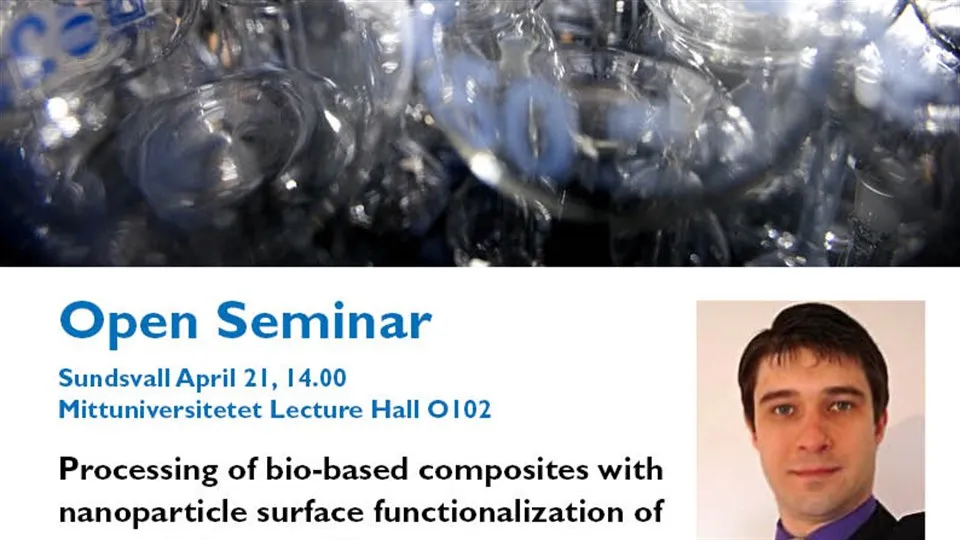Open Seminar with Pieter Samyn
Welcome to this open seminar with Pieter Samyn from Albert-Ludwigs University of Freiburg. The headline for the seminar is Processing of bio-based Composites with nanoparticle Surface functionalization of nanocellulose additives.
Nanoscale cellulose components are likely used as additives in composites as they deliver additional strength or may improve barrier resistance properties. However, in order to homogeneously mix the cellulose within a polymer matrix, its hydrophilic nature has to be overcome and chemical surface modifications are traditionally required. In this work, alternative approaches for tuning the surface properties of cellulosic fillers and compatibilizing with a polymer matrix have been investigated. In a first approach, cellulose nanowhiskers have been introduced during plasma polymerization, resulting in patterned films. In a second approach, fibrillated cellulose has been modified by the deposition of nanoparticles consisting of bio-inspired or renewable resources: (i) first, the adhesion properties of the hydrophilic fillers can be tuned by adsorption of adhesive nanoparticles including peptides with functional catechol groups; the functional nanoparticles have additional benefits for colorimetric or fluorescent sensing as a function of stress or temperature, and (ii) the hydrophobicity of the cellulose surface can be improved by a combination of chemical and topographical surface modification of the cellulose fiber using organic nanoparticles based on poly(styrene-co-maleimide) or SMI with encapsulated vegetable oils or wax. The properties of the surface-modified cellulose can be tuned by thermal release of the hydrophobic moieties. The processing of the modified fibers has been studied by rheological characterization and extrusion or film-pressing in combination with a PHB or PLA matrix. The surface-modified cellulose forms a more homogeneous blend in combination with biopolymers and can be used as coatings for packaging papers with improved hydrophobicity, or construction materials with improved mechanical properties.
Pieter Samyn studied from 1996-2001 Materials Science and Engineering at Ghent University (Belgium) and completed his Ph.D. in 2007 on polymer tribology. After post-doc positions at Department of Textiles (Ghent) and Department of Microsystems Engineering (Freiburg), he was appointed as a Juniorprofessor in Bio-based Materials Engineering in the Faculty for Environment and Natural Resources at the Albert-Lüdwigs University of Freiburg (2010). His research group was sponsored by the Robert-Bosch Foundation in the framework of "Sustainable Use of Natural Materials" and focusses on the valorization of forest resources as nanoscale building blocks for functional biocomposites and devices. In particular, he works on the processing of bio-based composites and papers providing new surface properties and technological functionalities, such as e.g., barrier coatings, superhydrophobicity, adhesion, interface compatibility, printing properties, controlled release mechanisms. He received several awards including the Arcelor Mittal prize (2001), Robert-Bosch Juniorprofessorship award (2011), and a- Heinz-Maier Leibnitz prize for excellent young researcher (2012). He has been visiting researcher at ETH Zürich, Laboratory for Surface Science and Technology (2006) and visiting professor at the University of Toronto, Department of Chemical Engineering & Applied Chemistry (2013). He has been selected for participation in the "Lindau Nobel Laureate Meeting" on chemistry (2013), and became a Juniorfellow of the Freiburg Institute for Advanced Studies (FRIAS) since August 2014.

